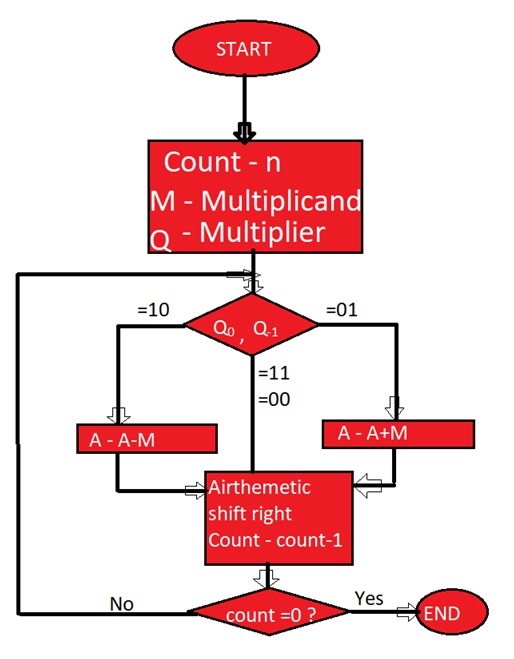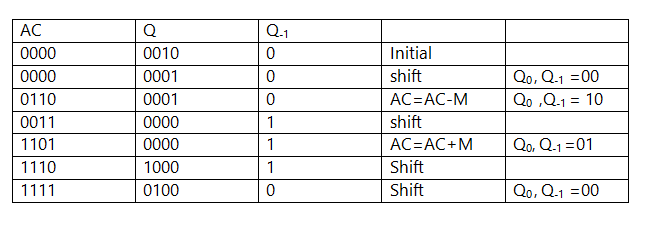Home »
Computer Science Organization
Booth's Algorithm in Computer Organization
By Abhishek Kataria, on July 29, 2018
What is Booth's Algorithm in Computer Organization?
This is a kind of algorithm which uses a more straightforward approach. This algorithm also has the benefit of the speeding up the multiplication process and it is very efficient too. Binary multiplication which has signed number uses this type of algorithms named as Booth's algorithm.
Flowchart of Booth's Algorithm

Booth's Algorithm for Two Complements Multiplication
- Multiplier and multiplicand are placed in the Q and M register respectively.
- Result for this will be stored in the AC and Q registers.
- Initially, AC and Q-1 register will be 0.
- Multiplication of a number is done in a cycle.
- A 1-bit register Q-1 is placed right of the least significant bit Q0 of the register Q.
-
In each of the cycle, Q0 and Q-1 bits will be checked.
- If Q0 and Q-1 are 11 or 00 then the bits of AC, Q and Q-1 are shifted to the right by 1 bit.
- If the value is shown 01 then multiplicand is added to AC. After addition, AC, Q0, Q-1 register are shifted to the right by 1 bit.
- If the value is shown 10 then multiplicand is subtracted from AC. After subtraction AC, Q0, Q-1 register is shifted to the right by 1 bit.
Basically, Booth's algorithm uses the concept of an arithmetic right shift in which the leftmost bit is not only shifted right by 1 bit but it also remains in the original position.
Booth's Algorithm Example
Let us multiply (-6) and (2) using Booth's algorithm.
Solution: (6)10 = (0110)2
As it is given multiplicand, M= (-6)10 =2 complement of 0110 = 1010
Multiplier, Q= (2)10 = 0010

Product by Booth's algorithm= 1111 0100
Advertisement
Advertisement